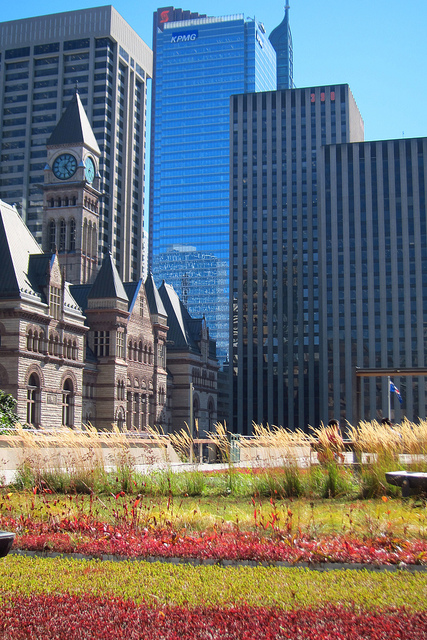

Photo by West Annex News licensed under CC BY 2.0.
Public officials throughout the country are working hard to save the environment. There are many federal mandates, but a number of states have even more rigid laws related to sustainability. Air quality, waste disposal, alternative energy, water resources and green building practices – these are but a few of the areas where government leaders work for sustainability on a daily basis.
There are avid supporters and also naysayers. Even many taxpayers question whether the laws are making a meaningful impact. Looking at just one area – green building practices – provides some interesting answers.
Green building is a process of designing, constructing, operating, maintaining and removing buildings in ways that conserve natural resources and reduce any impact on the environment. Green buildings are constructed with materials that are environmentally responsible and resource-efficient. The process starts with planning and extends through architectural, engineering and construction services. There are two objectives – to reduce any negative impact to the natural environment and to provide a positive impact on the health of people who will inhabit the facility.
Because U.S. consumers utilize more resources per capita than consumers anywhere else in the world, green buildings have become very popular. Compared to conventional buildings, a green building uses less energy and water and generates significantly lower utility bills. The new industry creates jobs and encourages new technology. The popularity of the industry will cause it to grow quickly, and projections are that it will represent $69 billion by 2019. That’s much faster than overall construction is expected to grow.
Some detractors complain that environmentally friendly buildings cost more and that’s true. In fact, most green buildings cost about 2 percent more, but the structures yield 10 times as much over the entire life of the building.
The city of Portland and the state of Oregon have embraced the green building industry. The state has become a leader in green building. Legislators founded the Oregon Built Environment & Sustainable Technologies Center (Oregon BEST) to focus specifically on commercialized research related to green building technologies. Not only will green building practices be encouraged, but they will also be rewarded.
Washington State is also leading the way in the green procurement trend. The state recently passed laws to increase the procurement of recycled products by local, state and education agencies. State agencies are required to purchase products that do not contain toxic substances if alternatives are available. They are also required to use green building practices, manage vehicle fleets for fuel efficiency, reduce office paper use and purchase recycled paper.
One creative element in the green building industry is green roofs, and this trend is more prevalent now than most would think. A green roof is one that is partially or completely covered with some kind of vegetation. The roofs can be aesthetically pleasing, but more importantly, they result in significant cost savings. According to a study, green roofs last 200 percent to 400 percent longer than standard roofs. They generate energy cost savings of 25 percent to 50 percent and reduce dramatically the need for roof maintenance. They also help clean the air. Many cities, including Austin, Baltimore, New York, Philadelphia and Washington, D.C., offer tax and fee incentives when green roofs are installed on buildings.
Green buildings contribute to more than sustainability. They save taxpayers money, provide healthy environments for people, offer benefits to the planet and provide opportunities to businesses across multiple industries. As cities and states move to capitalize on the overall long-term cost savings of green buildings, it may become common to see plants growing on roofs.
